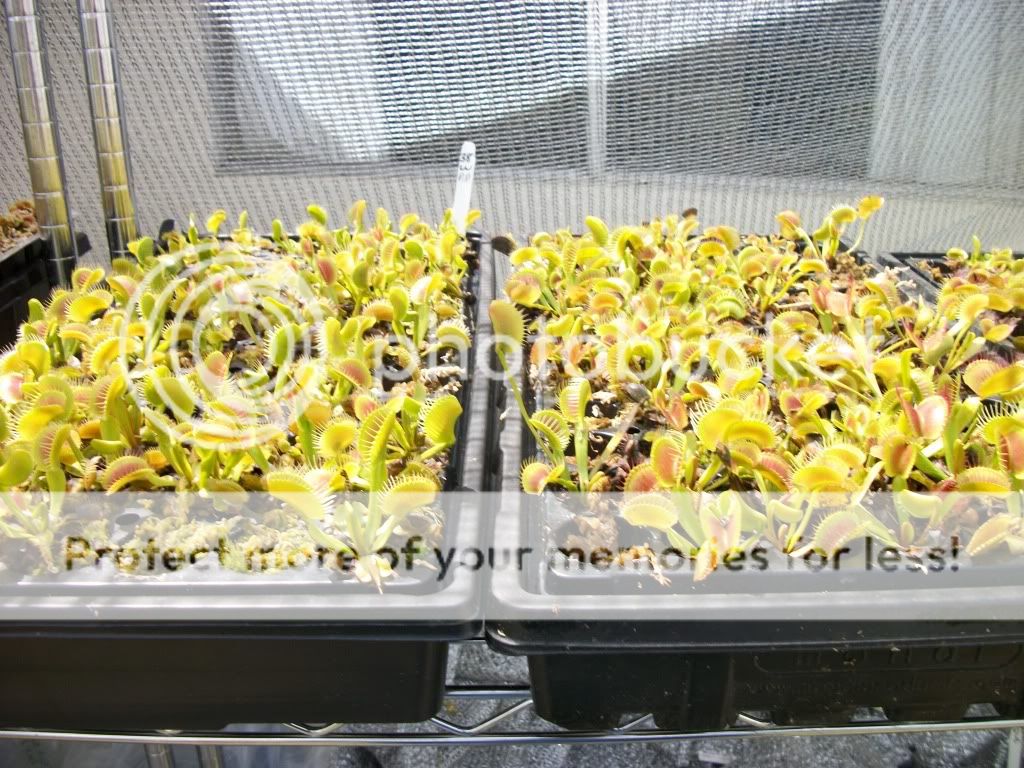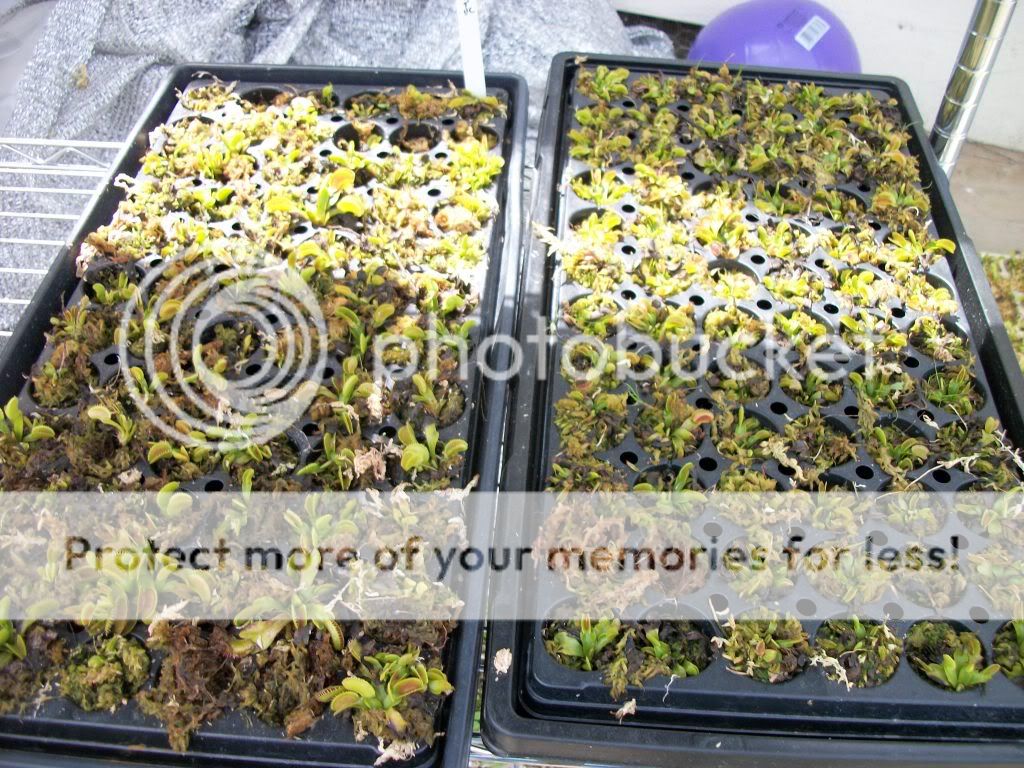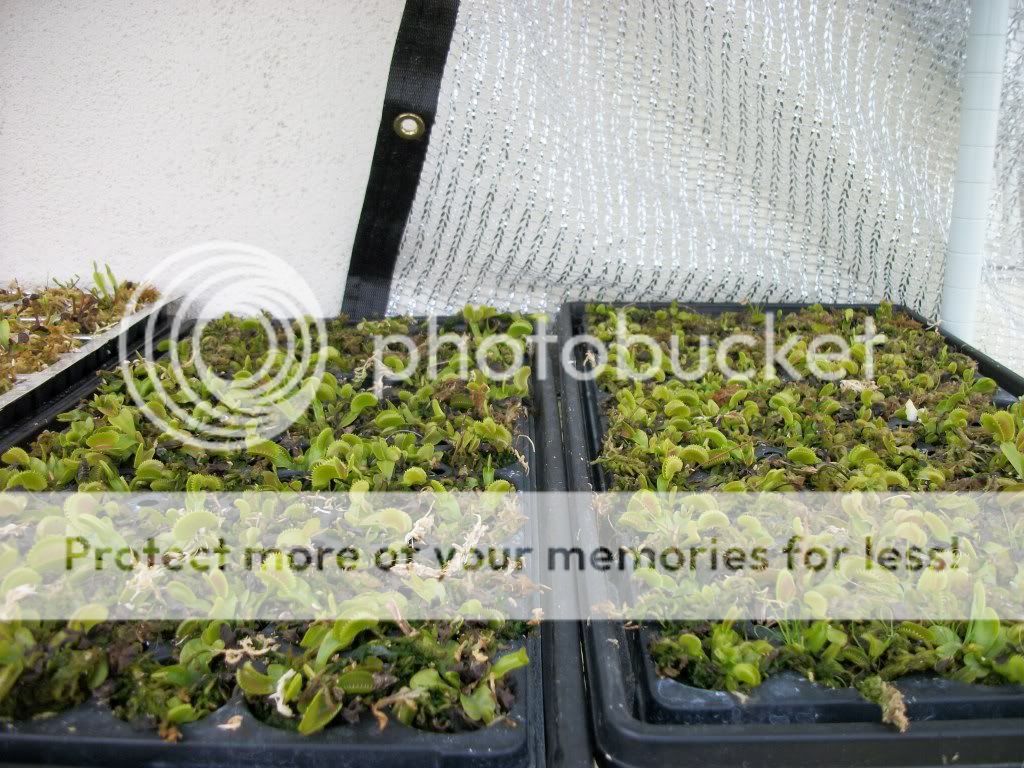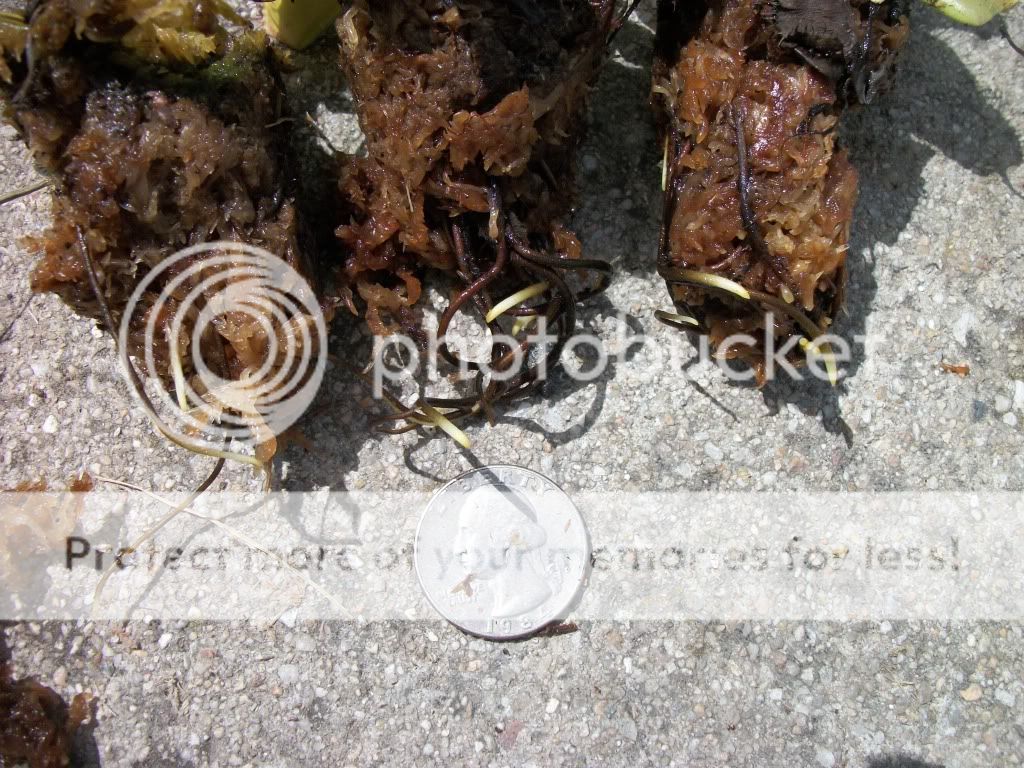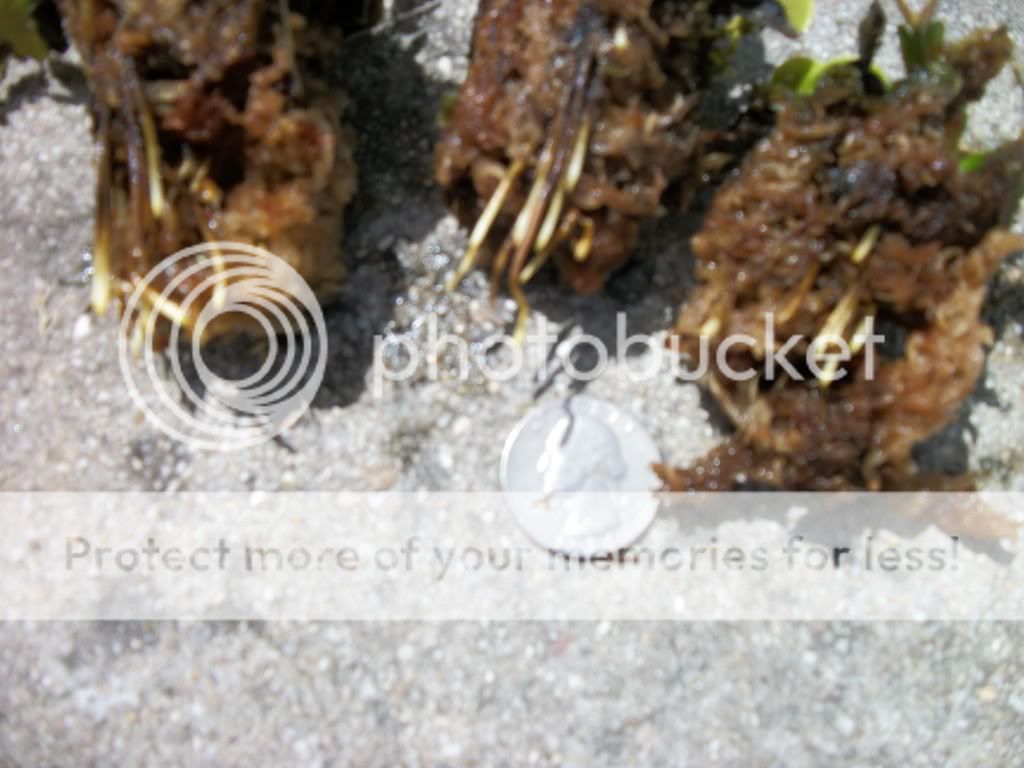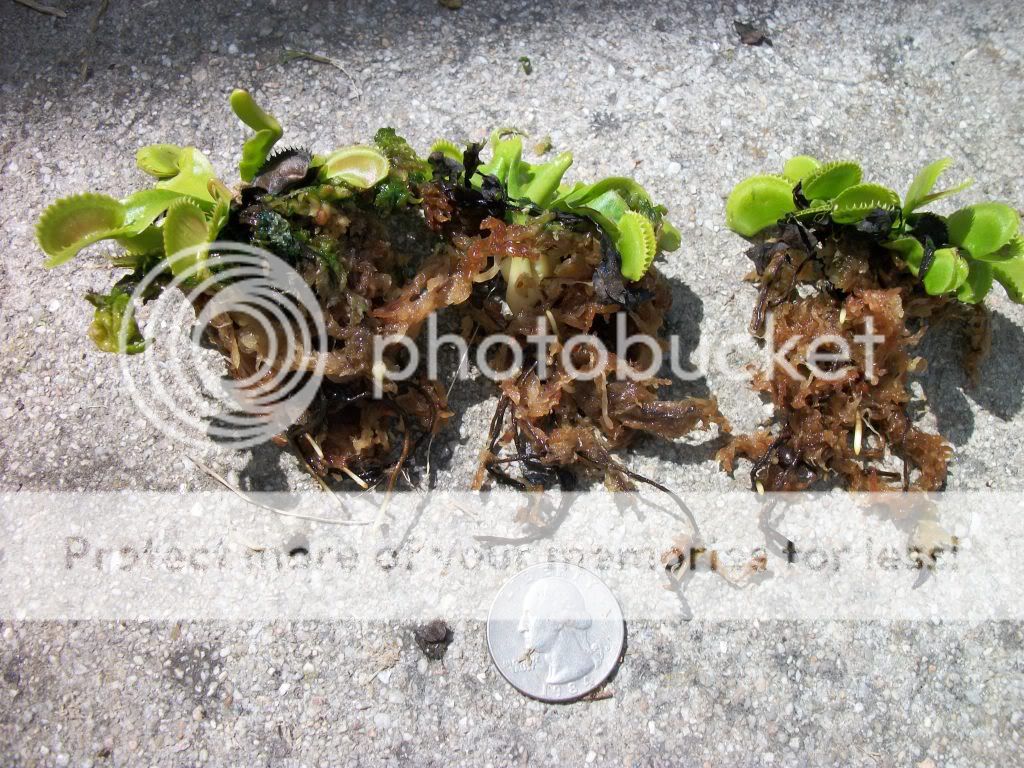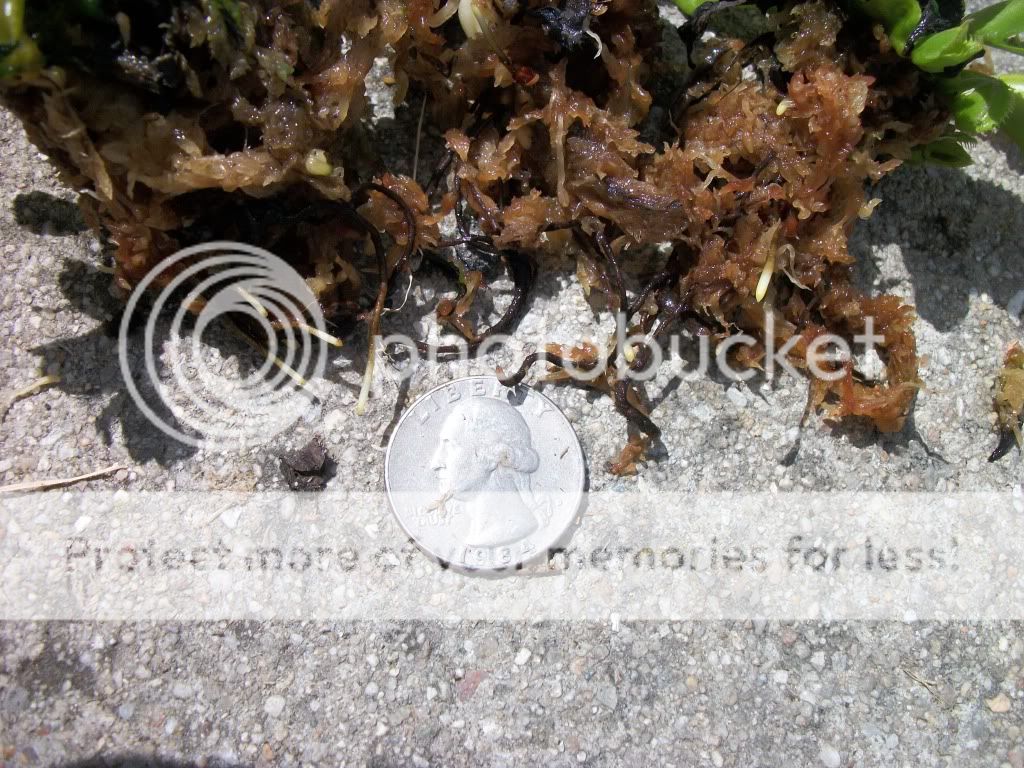- Wed May 02, 2012 3:12 pm
#141588
If the moss is slowly soaking up a lot of water in a few hours every time you water it you are probably letting it get too dry. There should be a film of water at the bottom of the tray or even a little puddle still left when it is time to rewater. If the moss is getting drier on the very bottom then it is being allowed to get too dry in between waterings.
Peat works differently. Peat at the bottom of a pot, even if the tray method is not being used is basically a wet poorly oxygenated sludge pile. Functionally what people call the "dry method" with peat, peat/sand, or peat/perlite is still growing a VFT very wet. The root tips at the bottom of the pot where peat and whatever else is in there is compacting is very wet even when the top looks dry.
Some growers may think that their "dry method" is substantially different than growing with LFS in a tray as far as wetness around the roots goes but really it's not. And since the wet peat sludge pile creates a barrier at the bottom of the pot between well aerated soil(which with LFS is normally present) and oxygen barren soil, it really becomes necessary to allow the outer perimeter of the sludge pile on the bottom of the pot to dry a little in between waterings to get air in there with oxygen. This isn't a problem with LFS as it has so many large air pockets. When a VFT is being grown with peat in the tray method and it is hot outside the way the roots are getting oxygen is by fresh water being added to the tray or top watering every time the plant needs to be rewatered. Since the heat makes the water evaporate quickly this is being done frequently enough that the VFT is getting some oxygen, usually enough to survive and at least grow somewhat well.
"Dry Method" growers may also think that if they add sand or perlite to the peat that this helps with the poor oxygenation that peat has. But I don't know why they think this is the case since the peat just clumps around the sand or perlite. Functionally there is not a substantial difference between 100% peat and peat/sand or peat/perlite as far as oxygenation goes. But there is a large functional difference as far as oxygenation goes for LFS vs peat.
One time I had an import of VFTs with another fellow CP vendor. We both got VFTs from the same order at the same time. I put mine in rootmaker trays with LFS and a little coarse perlite on the very bottom of each plug and he put his in a peat/sand mix in pots. A month or so later he sold me all his VFTs from the same exact order. I kept them in the same pots with the same mix and in a tray of water that was lower than my water level kept in my rootmaker trays. After about another month I began selling VFTs from both batches. I sell my VFTs bareroot. So I was digging them up and inspecting and cleaning their roots. The LFS grown VFTs had roots 3 time as long and noticeably thicker and tougher than the peat grown VFTs y then. After a while the peat grown VFTs did start making longer and thicker roots too but by then they were behind in top growth too.
I believe that LFS is a better medium to grow VFTs in overall. I have noticed on this forum that some posters have a heavy bias against using LFS for VFTs and have even seen some posts where using LFS for VFTs was being mocked. Personally I find this very strange. I have at a couple of BACPS meetings commented to other experienced CP growers how LFS growing with VFTs is sometimes mocked on this forum. But as near as I can tell the majority of experienced CP growers there use either pure LFS for their VFTs or use LFS as one of the bigger ingredients in their VFT soil mix. They usually combine this with tall pots too and then use the tray method year round and just keep the water level lower in the Wintertime. Many of these growers doing this have been growing their VFTs for 20-30 years this way.
I'm not saying that using peat for VFTs is bad or that they can't grow well in peat. I believe it is a viable option to use it as a media for VFTs. But I'm pretty certain that VFTs actually grow a little better with LFS. I have 15,000+ growing in it right now and VFT selling is my main source of income. Obviously if LFS was bad for VFTs I would not have been able to grow them in it for a living.
munchie16201 wrote:We both use the tray method since we are using LFS. ,but we were not sure if we should let water sit in the tray. I mean,when using the tray method we put water in the tray and it sot soaked up in about an hour. Would it be ok to add more water immediately or should we wait a day or so to add more water to the tray? So basically,should there be water in the tray at all times? Thanks for the help.The main thing with using LFS and the tray method is that it can over dry easily if there is no water in the tray but LFS also gets very wet when sitting in a tray. So you have to keep the pot in a pool of water all the time to prevent it from drying out but you also have to let the water recede to down near the bottom so that most of the roots are not waterlogged most of the time.
If the moss is slowly soaking up a lot of water in a few hours every time you water it you are probably letting it get too dry. There should be a film of water at the bottom of the tray or even a little puddle still left when it is time to rewater. If the moss is getting drier on the very bottom then it is being allowed to get too dry in between waterings.
Peat works differently. Peat at the bottom of a pot, even if the tray method is not being used is basically a wet poorly oxygenated sludge pile. Functionally what people call the "dry method" with peat, peat/sand, or peat/perlite is still growing a VFT very wet. The root tips at the bottom of the pot where peat and whatever else is in there is compacting is very wet even when the top looks dry.
Some growers may think that their "dry method" is substantially different than growing with LFS in a tray as far as wetness around the roots goes but really it's not. And since the wet peat sludge pile creates a barrier at the bottom of the pot between well aerated soil(which with LFS is normally present) and oxygen barren soil, it really becomes necessary to allow the outer perimeter of the sludge pile on the bottom of the pot to dry a little in between waterings to get air in there with oxygen. This isn't a problem with LFS as it has so many large air pockets. When a VFT is being grown with peat in the tray method and it is hot outside the way the roots are getting oxygen is by fresh water being added to the tray or top watering every time the plant needs to be rewatered. Since the heat makes the water evaporate quickly this is being done frequently enough that the VFT is getting some oxygen, usually enough to survive and at least grow somewhat well.
"Dry Method" growers may also think that if they add sand or perlite to the peat that this helps with the poor oxygenation that peat has. But I don't know why they think this is the case since the peat just clumps around the sand or perlite. Functionally there is not a substantial difference between 100% peat and peat/sand or peat/perlite as far as oxygenation goes. But there is a large functional difference as far as oxygenation goes for LFS vs peat.
One time I had an import of VFTs with another fellow CP vendor. We both got VFTs from the same order at the same time. I put mine in rootmaker trays with LFS and a little coarse perlite on the very bottom of each plug and he put his in a peat/sand mix in pots. A month or so later he sold me all his VFTs from the same exact order. I kept them in the same pots with the same mix and in a tray of water that was lower than my water level kept in my rootmaker trays. After about another month I began selling VFTs from both batches. I sell my VFTs bareroot. So I was digging them up and inspecting and cleaning their roots. The LFS grown VFTs had roots 3 time as long and noticeably thicker and tougher than the peat grown VFTs y then. After a while the peat grown VFTs did start making longer and thicker roots too but by then they were behind in top growth too.
I believe that LFS is a better medium to grow VFTs in overall. I have noticed on this forum that some posters have a heavy bias against using LFS for VFTs and have even seen some posts where using LFS for VFTs was being mocked. Personally I find this very strange. I have at a couple of BACPS meetings commented to other experienced CP growers how LFS growing with VFTs is sometimes mocked on this forum. But as near as I can tell the majority of experienced CP growers there use either pure LFS for their VFTs or use LFS as one of the bigger ingredients in their VFT soil mix. They usually combine this with tall pots too and then use the tray method year round and just keep the water level lower in the Wintertime. Many of these growers doing this have been growing their VFTs for 20-30 years this way.
I'm not saying that using peat for VFTs is bad or that they can't grow well in peat. I believe it is a viable option to use it as a media for VFTs. But I'm pretty certain that VFTs actually grow a little better with LFS. I have 15,000+ growing in it right now and VFT selling is my main source of income. Obviously if LFS was bad for VFTs I would not have been able to grow them in it for a living.


